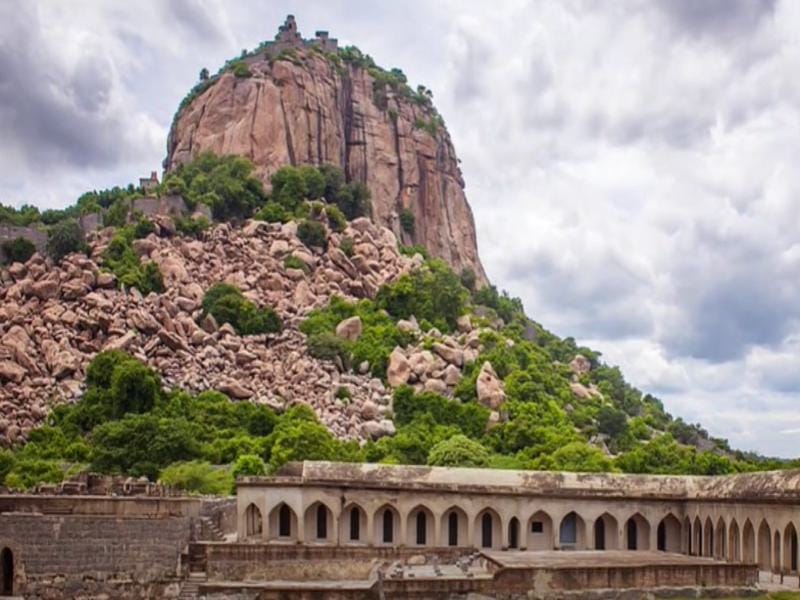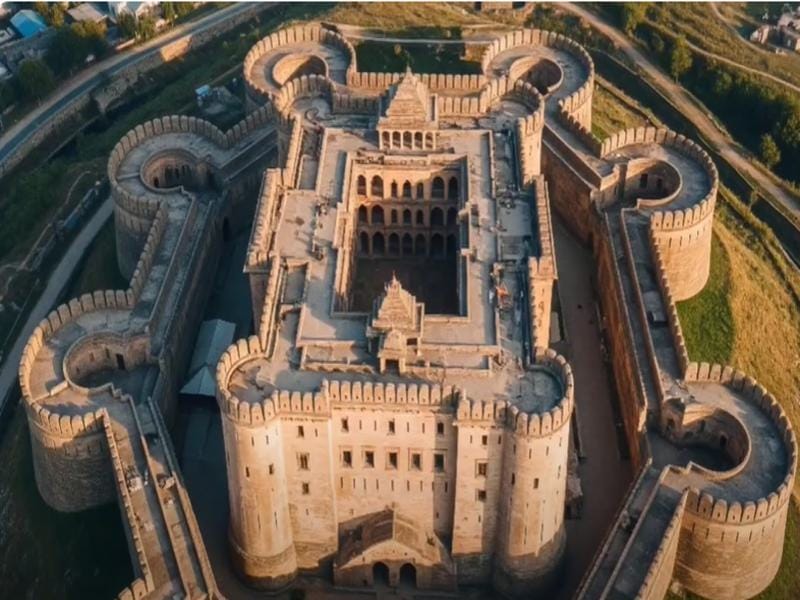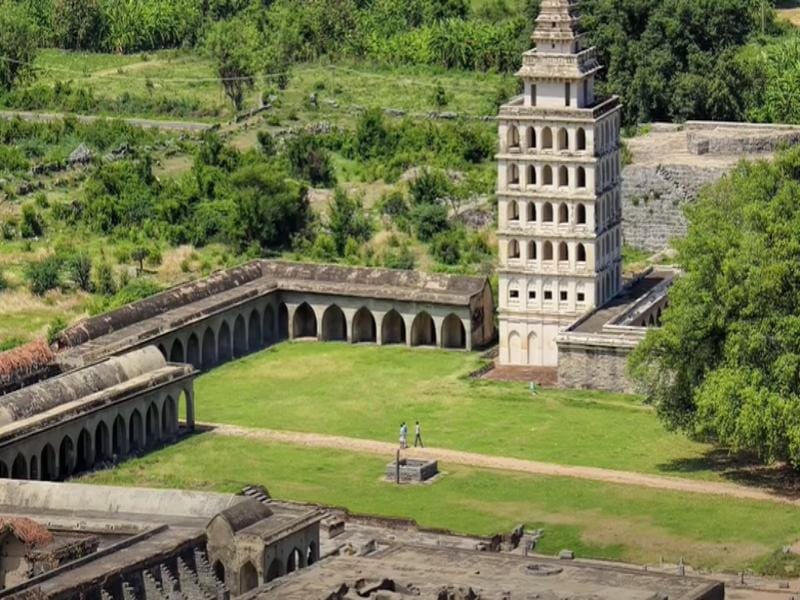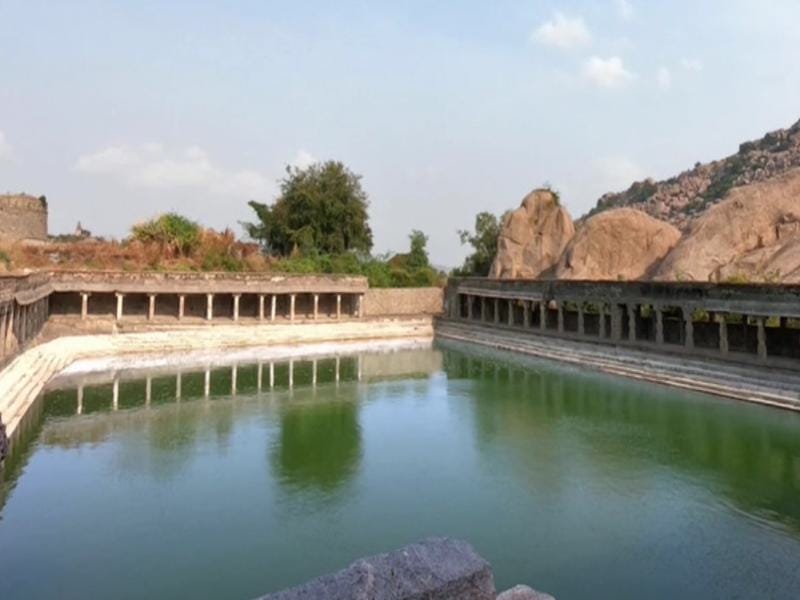Gingee Fort History

Why Gingee Fort is suddenly on every traveller’s list



Ever since Gingee Fort — part of the Mighty Maratha Landscape along with 11 other forts — was inscribed as a UNESCO World Heritage Site, visitor numbers have surged dramatically: from roughly 600–700 people a day to about 1,700 over the weekend. The hype is deserved. Spread across three dramatic hills — Rajagiri, Krishnagiri and Chandragiri — the fort hides centuries of stories: romance and war, famine and deceit, architectural brilliance and ingenious military tactics.
In this guide, drawn entirely from the provided source material, you’ll find Gingee Fort history, timings, key rulers (aka “Gingee Fort king name”), practical planning tips, and first-hand style reviews from people who climbed it right after the UNESCO announcement.
Gingee Fort quick facts & timings (read this first)
- Location: Villupuram district, ~160 km from Chennai, en route to Thiruvannamalai
- Hills/Citadels: Rajagiri (~800 ft), Krishnagiri, Chandragiri
- First build (traditionally credited): 12th century by Ananda Kon, a Konar (Yadava) chieftain
- Ticket price: ₹25 (Indians), ₹300 (foreigners)
- Photography: Still cameras allowed for a fee; drones prohibited without prior permission
- Climbing rule: Climbing is not permitted after 3 pm
- Trek time: About two to two-and-a-half hours (up and down) for Rajagiri if you’re reasonably fit
- What to pack: A stick (to handle monkeys), at least 1 litre of water, snacks, comfy shoes & clothes
- Ideal trip length: Two days if you want to scale all three hills
Where exactly is Gingee Fort & how to reach
- By road: Roughly a four-hour drive from Chennai
- Nearest bus stop: Gingee
- Nearest railhead: Tindivanam
- Nearest airport: Chennai
Tip: Start early in the morning so you are well within the no-climb-after-3 pm window and can enjoy the breeze at the top without rushing.
Gingee Fort history: from Ananda Kon to the British
1. The origin story (12th century)
According to tradition, Ananda Kon, a Konar (Yadava) chieftain, first built the fort in the 12th century. Over time, the complex expanded across three hills with hidden pathways, crocodile-filled moats, granaries, barracks, sacrificial stones, secret passages, treasuries and more.
2. The Nayaks & Vijayanagara legacy (13th to 16th centuries)
Krishna Kon fortified the fort and expanded it beyond Rajagiri, establishing Krishnagiri around 1240 CE. Later, the Nayaks of Gingee, chieftains under the Vijayanagara Empire, ushered in a relatively peaceful period that allowed for architectural advancements. Much of what you see on Rajagiri (the strongest point of the fort at ~800 ft) — including the graceful Kalyana Mahal (with its bathing tank for royal women) — points to this era.
3. Mughal, Maratha & Carnatic Nawab tussles (17th to early 18th centuries)
- 1677: Chhatrapati Shivaji captured Gingee from the Mughals and famously dubbed it the “Troy of the East”, recognising its near-impregnable nature.
- 1677–1698: The Mughals under Aurangzeb’s generals took it back. A drawbridge atop Rajagiri often determined life or death in battle, sending enemy soldiers plummeting if they attempted to scale it.
- 1700: Swarup Singh, a Bundela chief, was deputed by Aurangzeb to rule the fort.
- 1714 (Jan–Oct): Raja Tej Singh (popularly but incorrectly called De Singh), Swarup Singh’s son, ruled Gingee for 10 months. He died heroically fighting the Nawab of Arcot, and Tamil ballads recall his widow’s act of sati.
4. French, British & Hyder Ali (18th century onwards)
The French and the British supplied weapons to local factions, each keen to control the fort. Hyder Ali held it briefly. Eventually, the British established magazines and introduced guns, integrating Gingee into their broader colonial military network.
Gingee Fort king name: who actually ruled, when?
There isn’t a single “Gingee Fort king name.” The fort changed hands multiple times, and each phase contributed to its layered identity:
- Ananda Kon (12th century) – first credited builder
- Krishna Kon (1240 CE) – expanded the fort to Krishnagiri
- Nayaks of Gingee – Vijayanagara chieftains, prolific builders on Rajagiri
- Chhatrapati Shivaji (1677) – Maratha rule begins; calls it Troy of the East
- Mughals (Aurangzeb’s generals) (c. 1677–1698) – seize the fort
- Swarup Singh & Raja Tej Singh (1700–1714) – Bundela chiefs under the Mughal umbrella
- Carnatic Nawabs – regional power contestation
- French, British, Hyder Ali – later control and military reconfiguration
Architecture & must-see spots
1. Rajagiri — the powerhouse
Rajagiri is the strongest and most visually compelling of the three hills. Here you’ll find:
- Kalyana Mahal (Vijayanagara style) with a stepped bathing tank for royal women
- Granaries, magazines (weapon stores), treasuries, bell towers, gyms
- Secret escape routes and Indo-Islamic domes and arches showcasing Mughal influence
- Two mighty cannons (touch their iron and imagine the battlefield roar)
- An ASI-unearthed granite throne with water pipes and tanks tapping into spring water
- Rooms near the “throne”, which ASI calls horse stables, but some historians believe could have housed the harem
2. The infamous drawbridge
A tactical masterpiece, the drawbridge above Rajagiri was used during the Maratha-Mughal battles. Pull it up at the right time, and enemies scaling the fort would meet a brutal end.
Gingee Fort timings, tickets & trek logistics
1. Timings & permits
- No climbing after 3 pm — plan to start early morning
- Tickets: ₹25 (Indians) / ₹300 (foreigners)
- Still cameras: Allowed for a fee
- Drones: Banned without prior permission
2. How tough is the climb?
If you’ve been keeping up with your cardio, the 800 ft ascent and return can be done in under 2.5 hours. Rajagiri is the most popular climb. A full exploration of all three hills is best done over two days.
3. Watch out for monkeys
“Troops” have been replaced by troops of monkeys. Carry a stick, keep food sealed, and don’t flash your snacks!
Gingee Fort reviews: on-the-ground voices
1. Pride, patience & a nine-year wait
Kesavan M and Sarguna K, now married, waited nine years to climb the fort together. The UNESCO World Heritage Site announcement finally pushed them to make it happen on a Monday afternoon — proof that weekdays here are for “loafers and lovers” looking for a quieter climb.
2. Kids, YouTube & “where’s the treasure?”
Two brothers from Bengaluru — A. Nithin (9) and Madhan (14) — climbed Rajagiri after binging YouTube videos. They were hoping to spot “treasures” around the treasury, but found the hidden pathway blocked. Their verdict? Still thrilling.
3. From 600 to 1,700 visitors — weekend rush is real
With the UNESCO tag and media buzz, weekend crowds have more than doubled. To dodge the rush, plan weekday mornings or start as soon as the fort opens (remember, no climbs after 3 pm).
Why Gingee is called the “Troy of the East”
Shivaji gave it that moniker for good reason. With triangular hilltop citadels, crocodile-filled moats, drawbridges, and invisible pathways, Gingee Fort’s defence architecture could frustrate even the most determined attackers. Its seven-year-long conflicts, especially between the Marathas and the Mughals, are a testament to how hard it was to crack.
Planning your perfect Gingee Fort trip
1. One-day outline (Rajagiri focus)
- Start early from Chennai (target reaching the fort by 9 am)
- Buy tickets, pack your stick & water, and begin the Rajagiri climb
- Explore the Kalyana Mahal, throne area, cannons, treasuries, bell tower, Ranganatha tower
- Start your descent well before 3 pm
- Drive back to Chennai, or stay overnight if you want to cover Krishnagiri & Chandragiri the next day
2. Two-day outline (all three hills)
- Day 1: Rajagiri (deep dive into its structures and stories)
- Day 2: Krishnagiri & Chandragiri (slower pace, fewer crowds, great views)
FAQs
What is the Gingee Fort timing?
Climbing is not allowed after 3 pm. Reach early to comfortably finish the trek.
What is the Gingee Fort ticket price?
₹25 for Indians and ₹300 for foreigners. Still cameras are allowed at an additional cost.
Who is the Gingee Fort king?
There is no single king. Key names include Ananda Kon, Krishna Kon, the Nayaks of Gingee, Chhatrapati Shivaji, Aurangzeb’s generals, Swarup Singh, Raja Tej Singh, the Carnatic Nawabs, the French, British, and Hyder Ali.
How difficult is the trek?
Moderate. If you’re reasonably fit, Rajagiri can be done in ~2–2.5 hours up and down.
Is Gingee Fort worth visiting after the UNESCO tag?
Absolutely. The UNESCO World Heritage Site status recognises its outstanding universal value. Expect bigger crowds, richer interpretation, and more conservation focus going forward.
Final Word
Gingee isn’t just another fort — it’s an 800-year tapestry of South Indian, Maratha, Mughal and colonial power play, sewn into three granite hills. Whether you climb for the history, the views, or the adrenaline of racing mischievous monkeys, you’ll leave with more stories than you came with. And if you go on a Monday, you might just meet a few loafers and lovers keeping the fort’s soft side alive.
Have questions or want this converted into a quick downloadable itinerary? Tell me how many days you have and I’ll customise it for you.
